Funny thing about us Kansas flatlanders, we get really excited about geological formations. Rocks. Or maybe it’s just me. I think it’s the same for many Kansans though, because many of the landmarks in our largely prairie state are rocks: Monument Rocks, Castle Rock, Rock City, Rock Town, Elephant Rock, Mushroom Rock, etc., etc.
In a prairie, a rock outcropping is like a cloud in a blue sky — everyone sees something in it and gives that shape a name.
That’s probably why I was so excited to get to see Percé Rock after taking the train from Montreal to the Gaspé Peninsula on Canada’s eastern coast. This part of Quebec Province has plenty of rocks, but this one had a name and I’d heard of it all the way back home in Kansas.
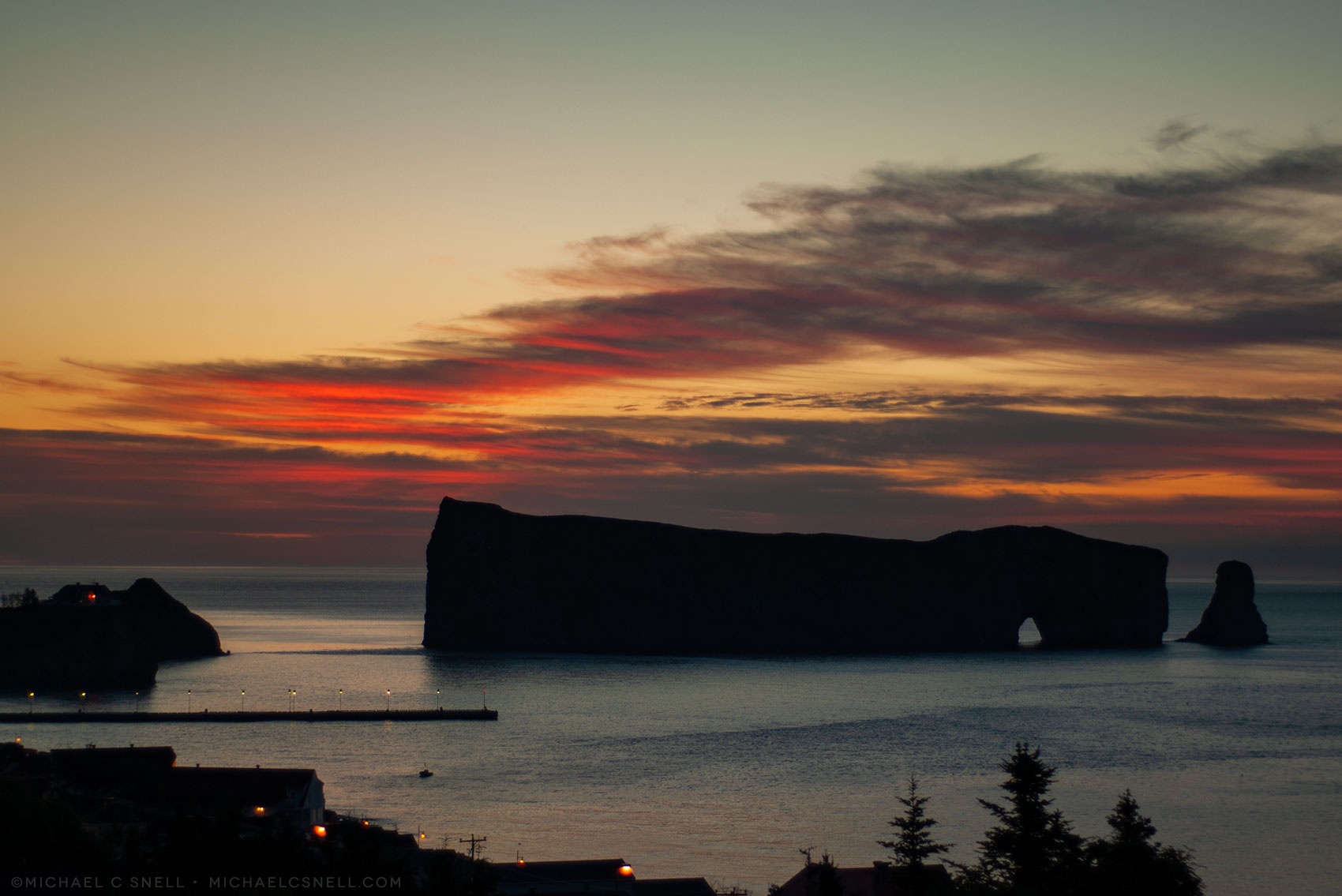
I had first seen the rock from a distance during a whale watching trip from the town of Gaspé the day before, but the view above was what I saw once I got to my hotel room in Percé. The hole you see in the rock is one of the largest natural arches over water and is what gives the rock its name — “pierced rock.”
A day trip by boat out to Bonaventure Island offered a closer look:
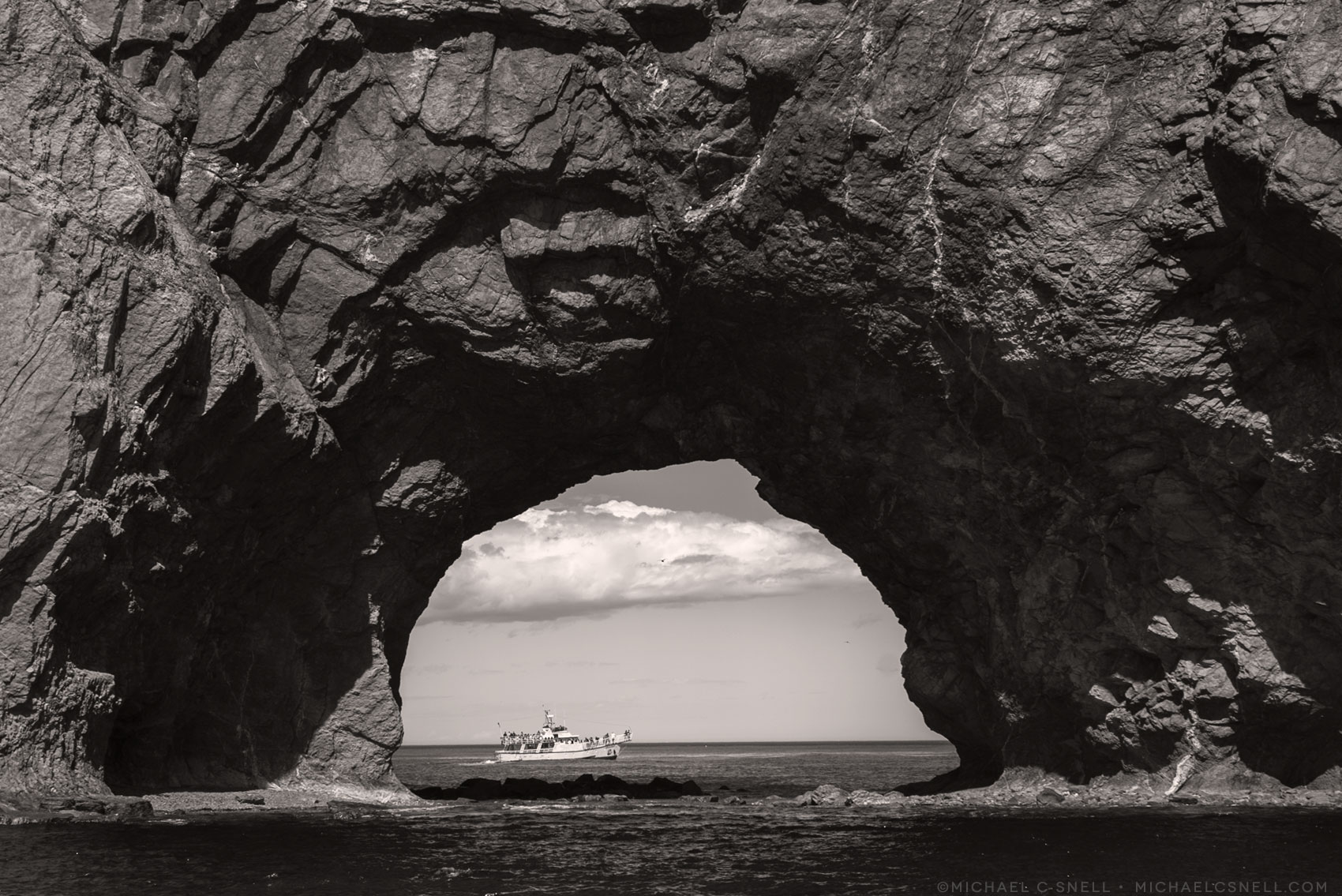
I had some free time on Bonaventure Island, and spent a large portion of it making more images of my new favorite rock — some with a borrowed Lensbaby. These lenses were fairly new for DSLRs at the time and, for those who aren’t familiar with them, they were fairly inexpensive lenses set on a flexible barrel. Flexing the barrel would shift the plane of focus, giving you a dreamy kind of look similar to some popular toy cameras. Lensbaby makes many additional styles of lenses now, but I was using one of the earlier generations.
I was really interested in finding more ways to photograph Percé Rock and I was determined to find a way to truly show its scale. That’s something that had been difficult to do from a distance, other than showing it in a wide shot in relation to the village.
Luckily on this trip, I had some free blocks of time. Even more luckily, some of that free time actually occurred when the light was good (You’d be amazed at how many times — even on trips that are focussed on photography — you find dinners scheduled at sunset, or you’re on a bus when the light is at its best).
One day I had the latter part of an afternoon free and only had to meet back up with my group for dinner — thankfully after sunset. I took that opportunity to head straight for the now-familiar rock and — this time — I wanted to get right up close to it. There was a rocky causeway from the mainland that you could use to walk out to Percé Rock, at times using stepping stones to cross shallow water. I scouted around, being wary of the signs warning of falling rock (and the bloody rock I spotted at the base of the cliff), and made photographs from every angle I could.
The lower the sun got, the more golden the rock became, changing from a creamy limestone color to a deep red/orange.
As the sun began to set, I returned to the causeway where people were using the stepping stones and played with reflections by getting my camera right down on the water’s surface. I spent a fair amount of time in that spot, trying different lenses — including my seldom used fisheye that I felt was actually pretty successful in this instance.
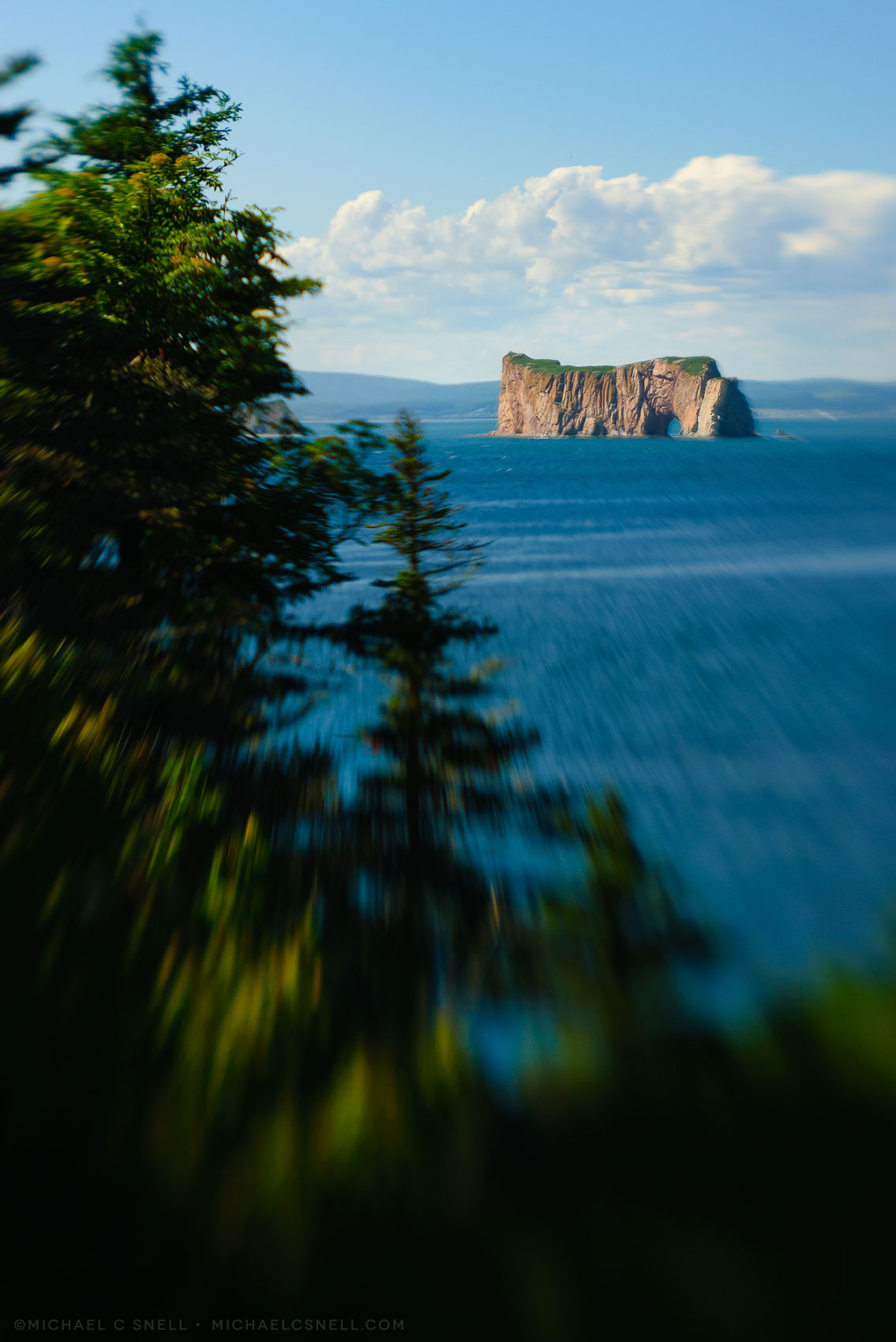
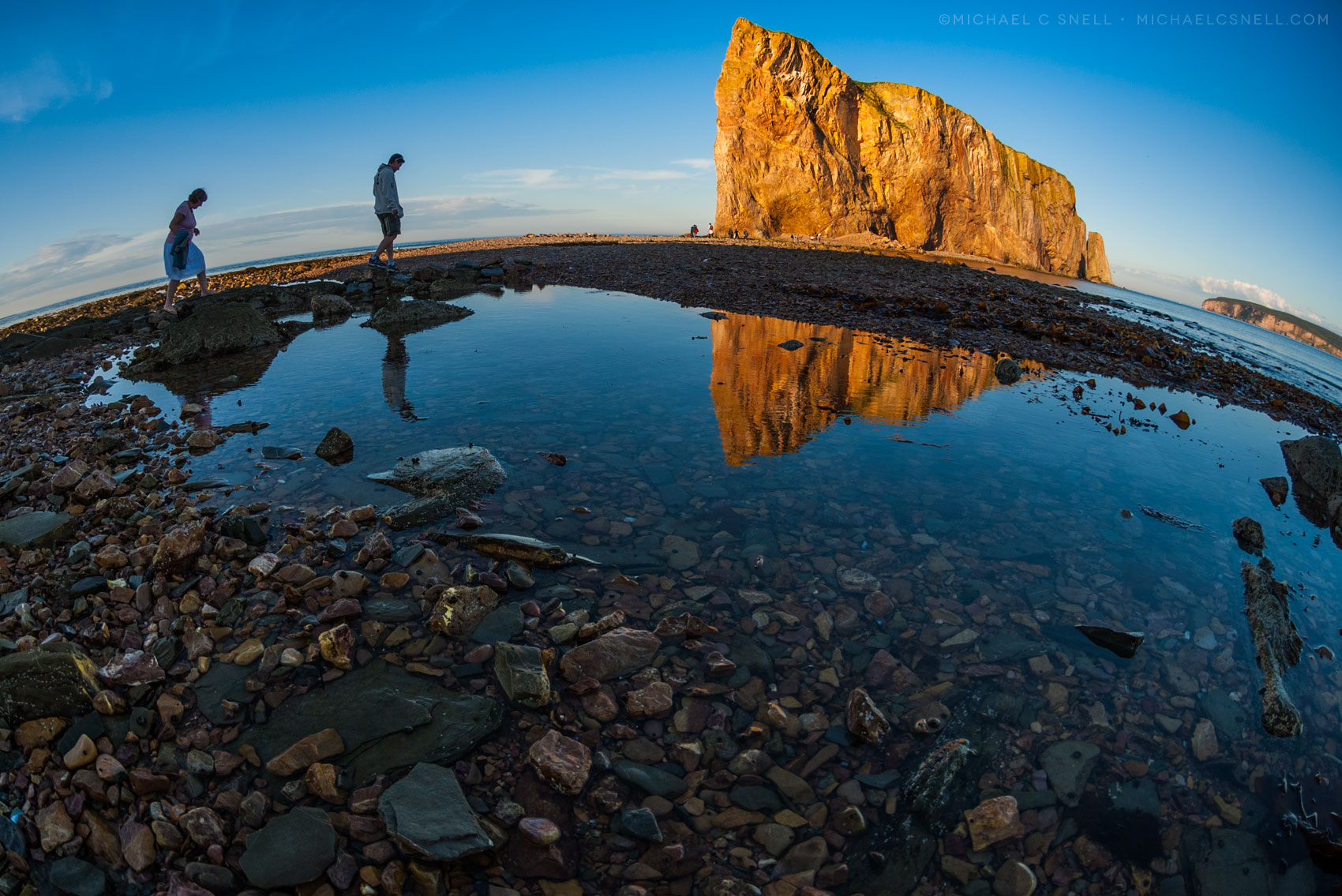
The above image was made with the Nikkor 10.5mm for DX (cropped sensor) cameras. I find fisheye lenses to be tricky. Their extremely wide field of view and uncorrected circular distortion are enticing. Looking through the camera is like looking at another world where our laws of physics don’t apply. But, when I look at the images later, they often just look overly distorted and tiny to me. Fisheye images also have a reputation for not selling well to publishers. Still, it’s a small, lightweight lens that usually still finds its way into my bag and every now and then pays off. I like the distortion in this shot because it conveys that “edge of the world” feeling that you have when you’re on the Gaspé Peninsula.
All in all, it was an incredible afternoon and evening, followed by a spectacular seafood dinner in a little restaurant overlooking the bay. Canada’s eastern coast never ceases to amaze me. Such an amazing place to visit.
So many shots from that day — here is a gallery of a few more:

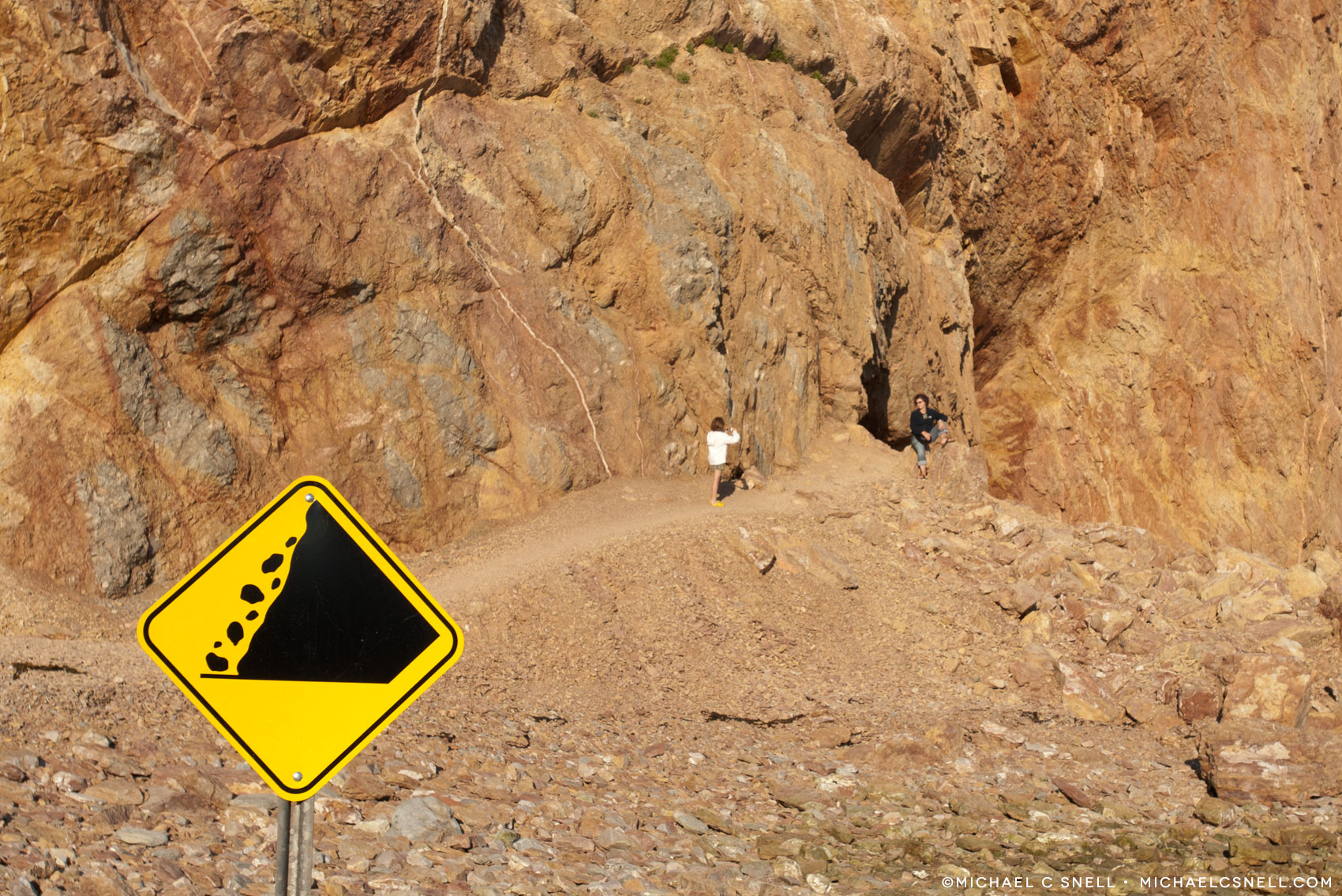
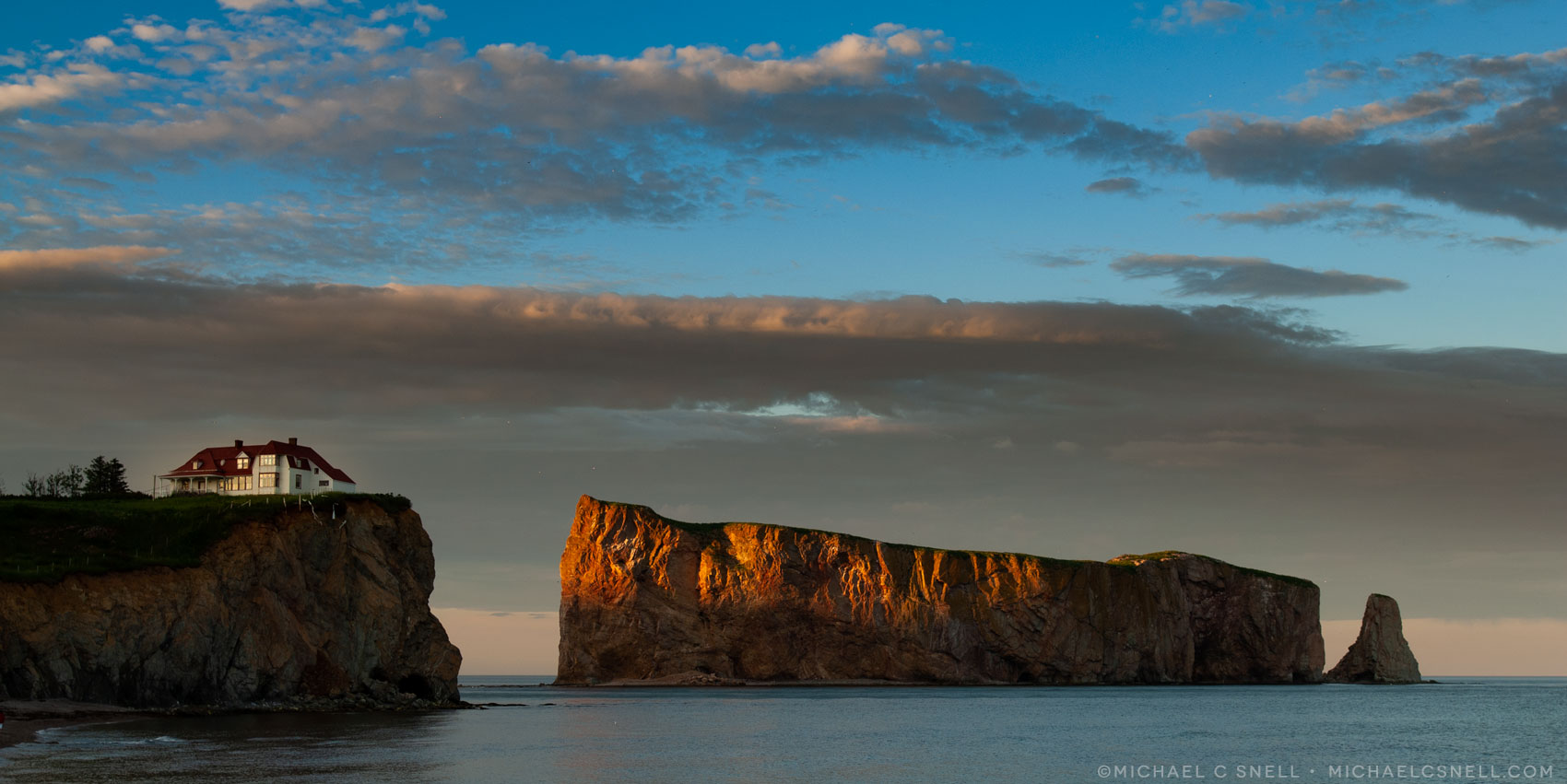
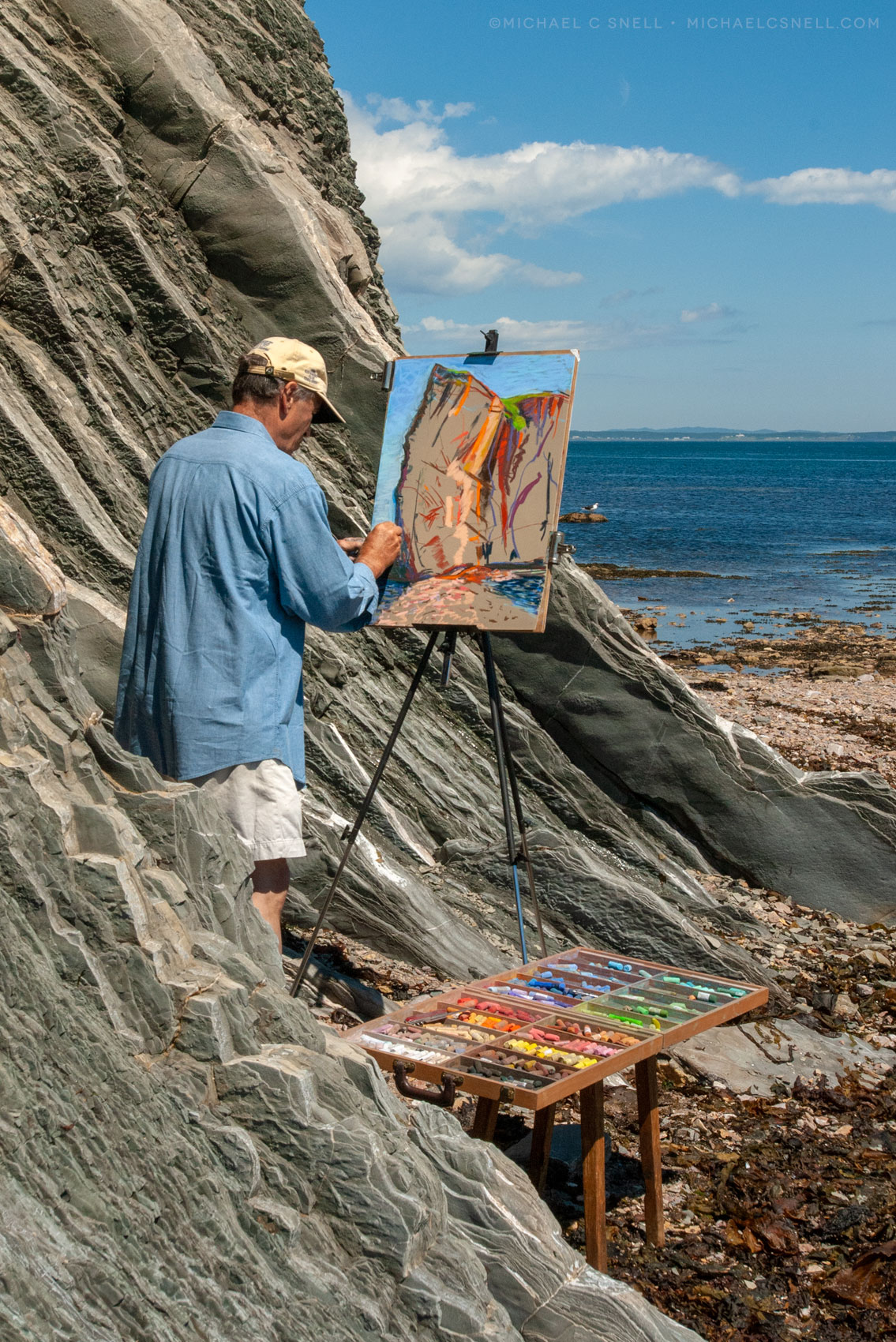
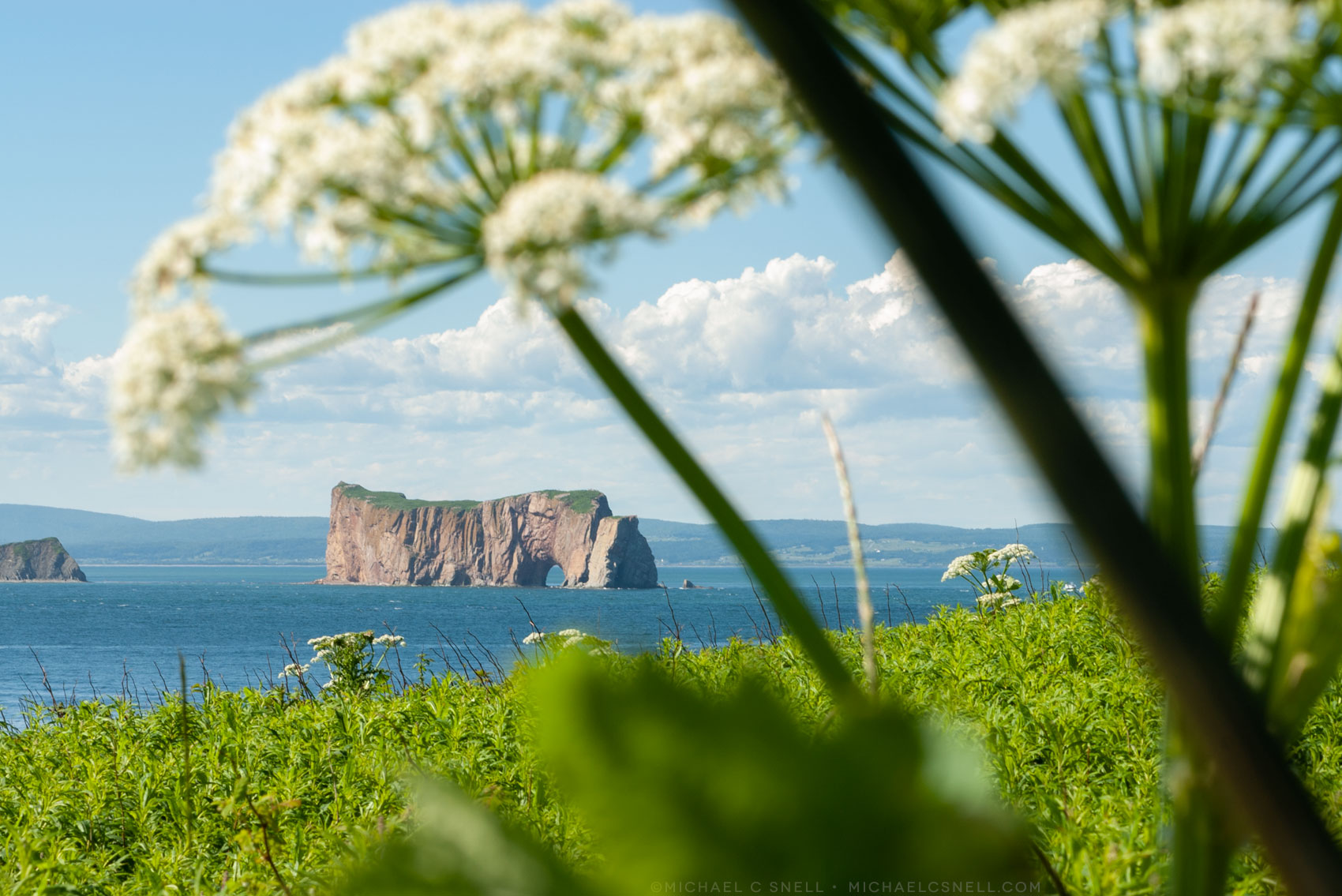

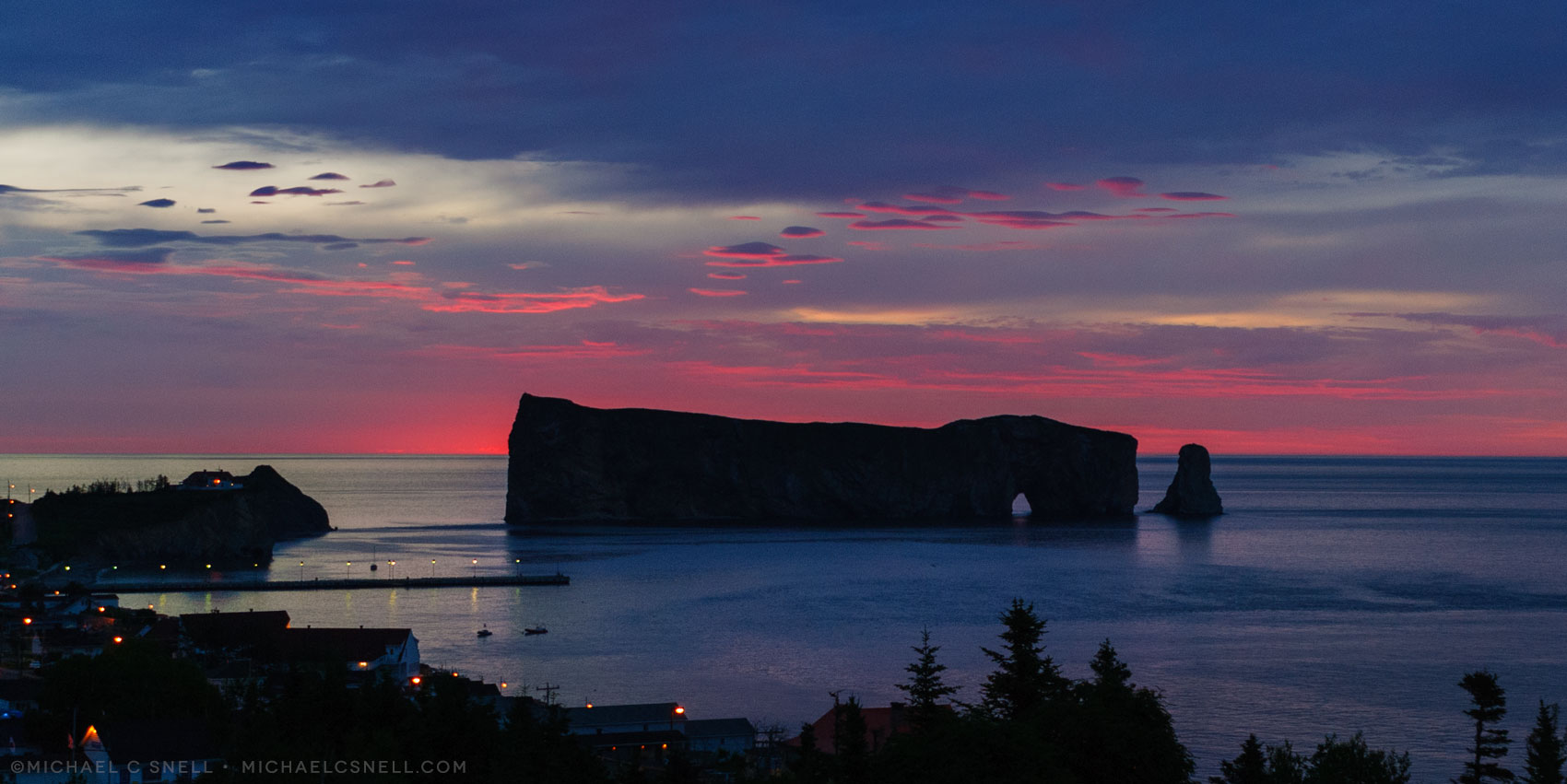
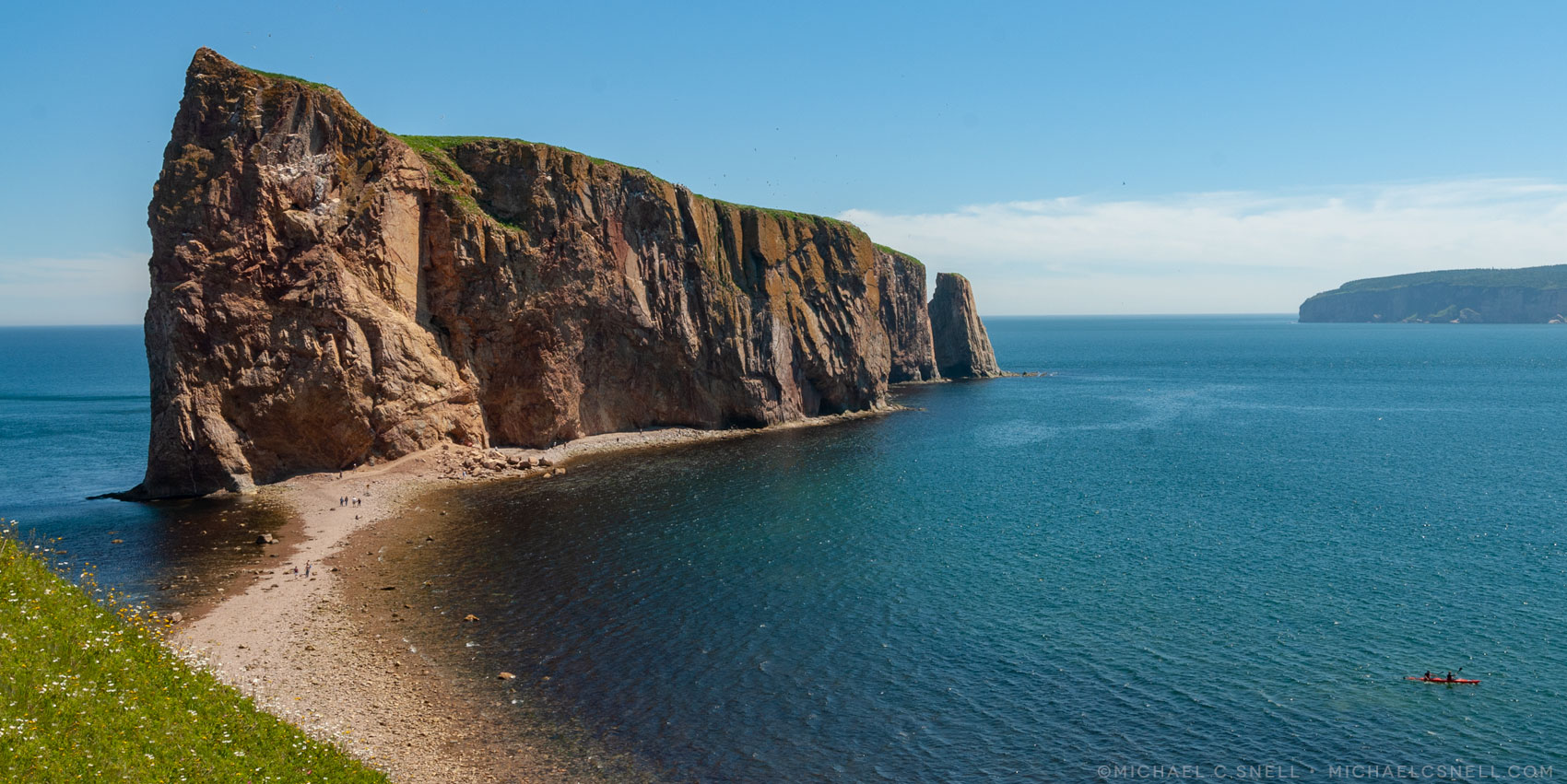
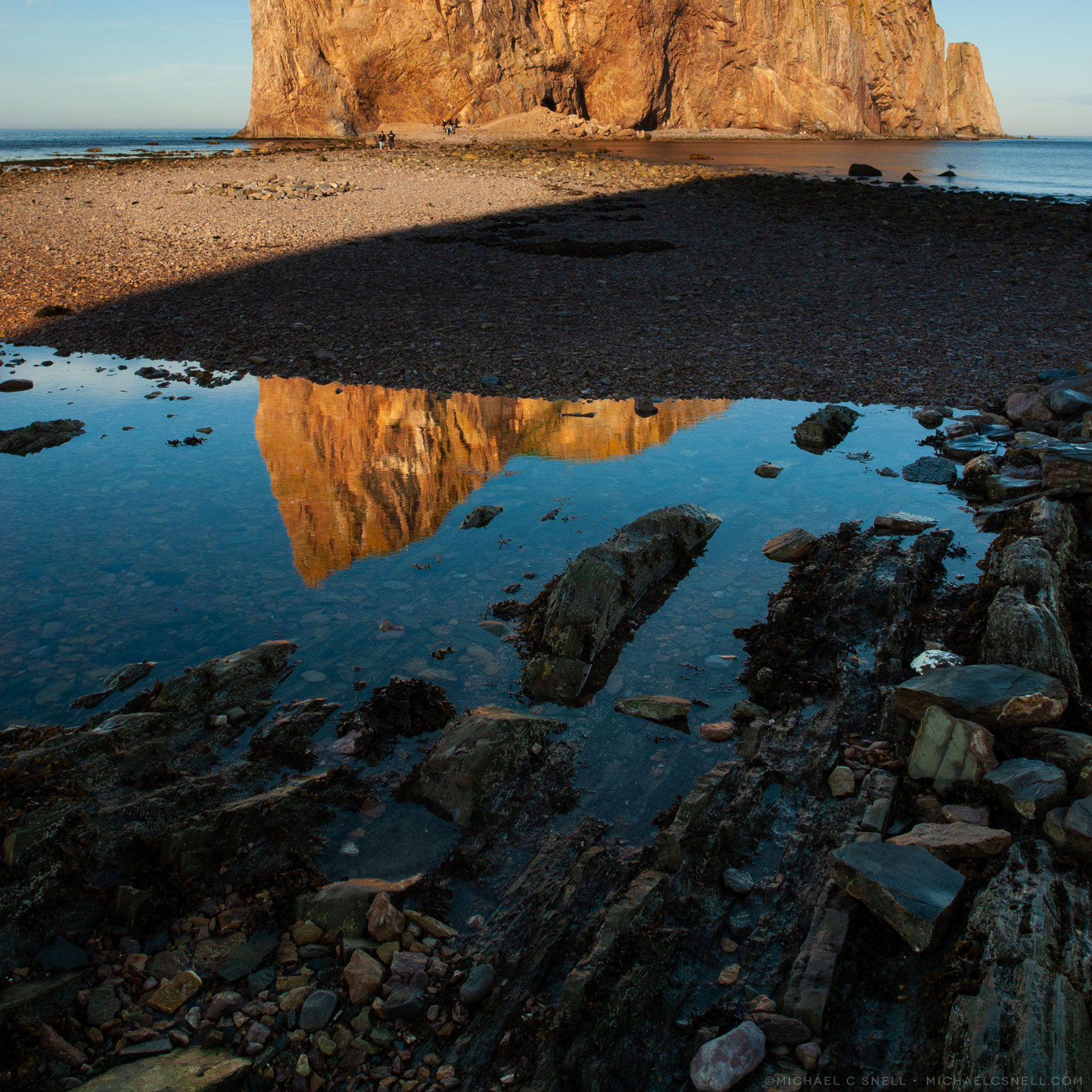
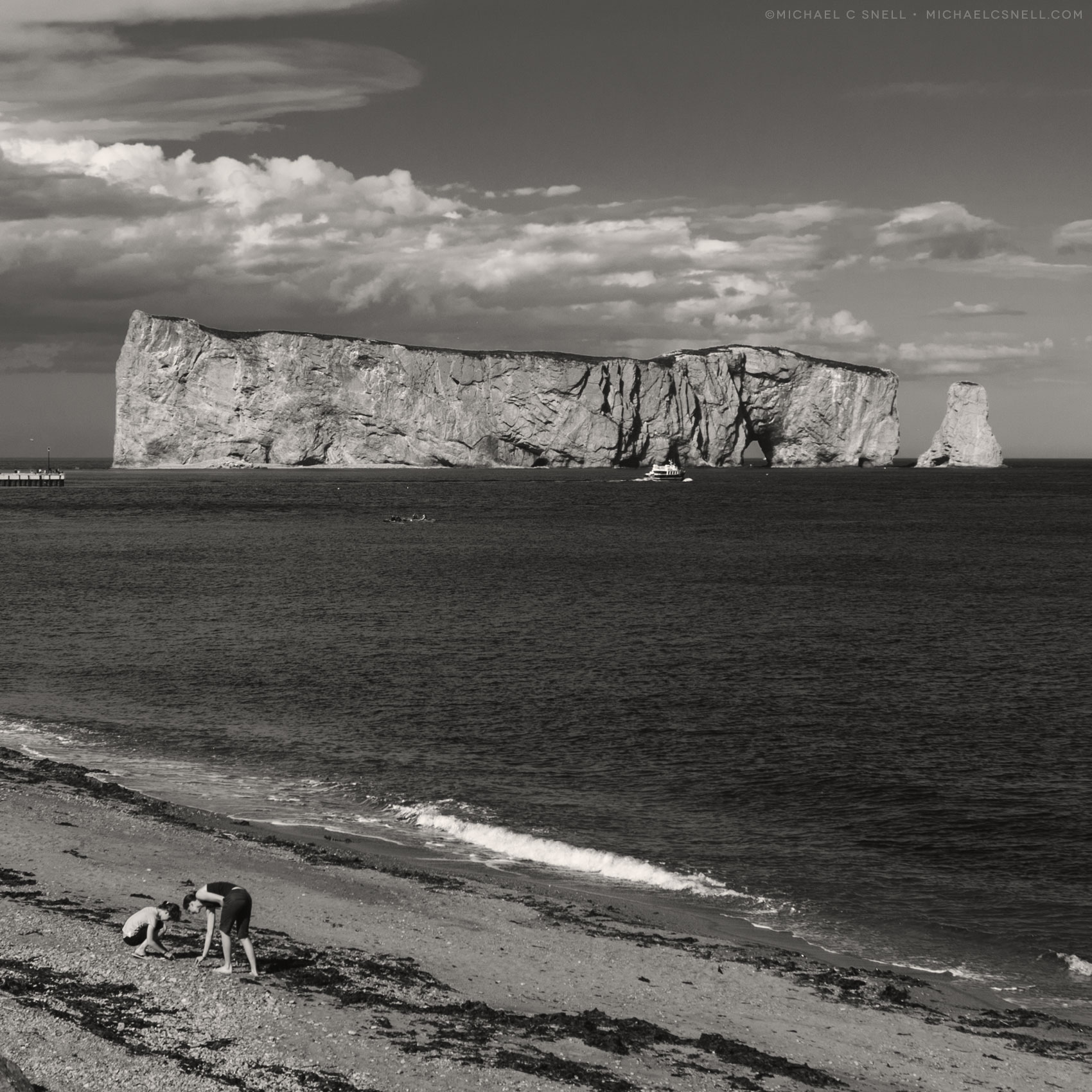

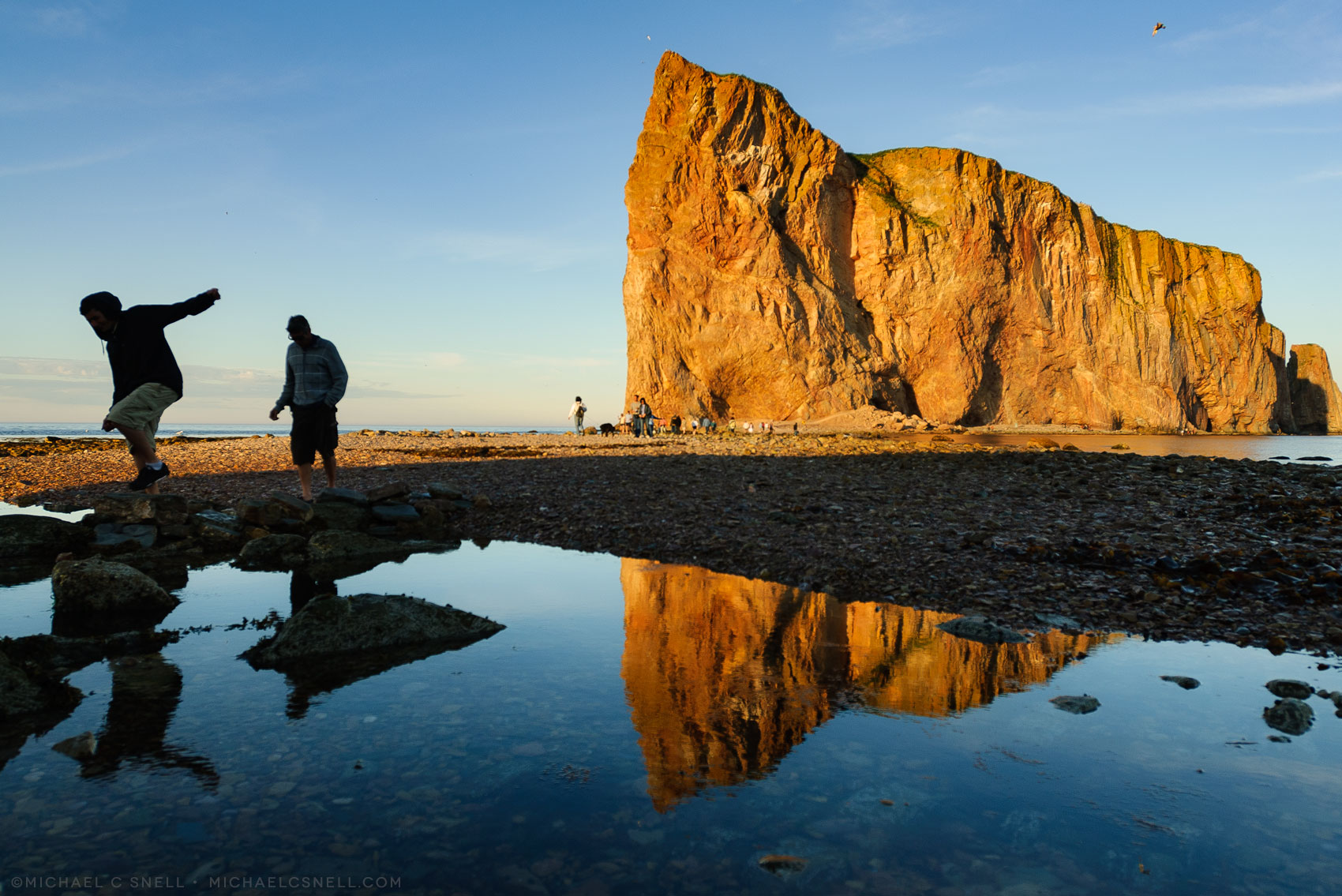

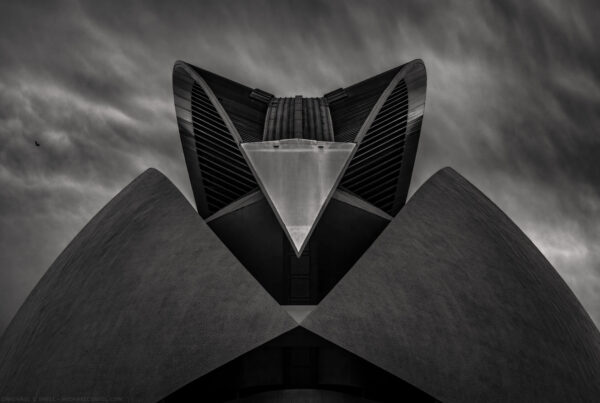

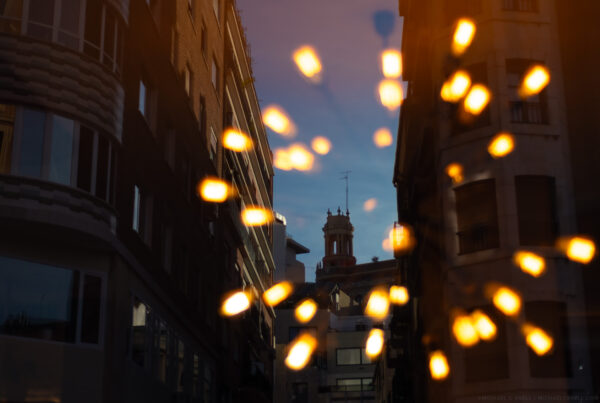

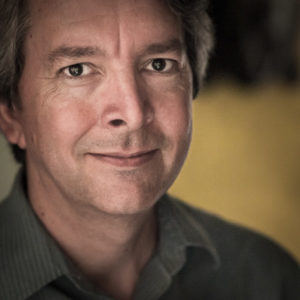
Beautiful job, Michael! A wonderful job of photography in all kinds of light and contrasts.
Thank you!